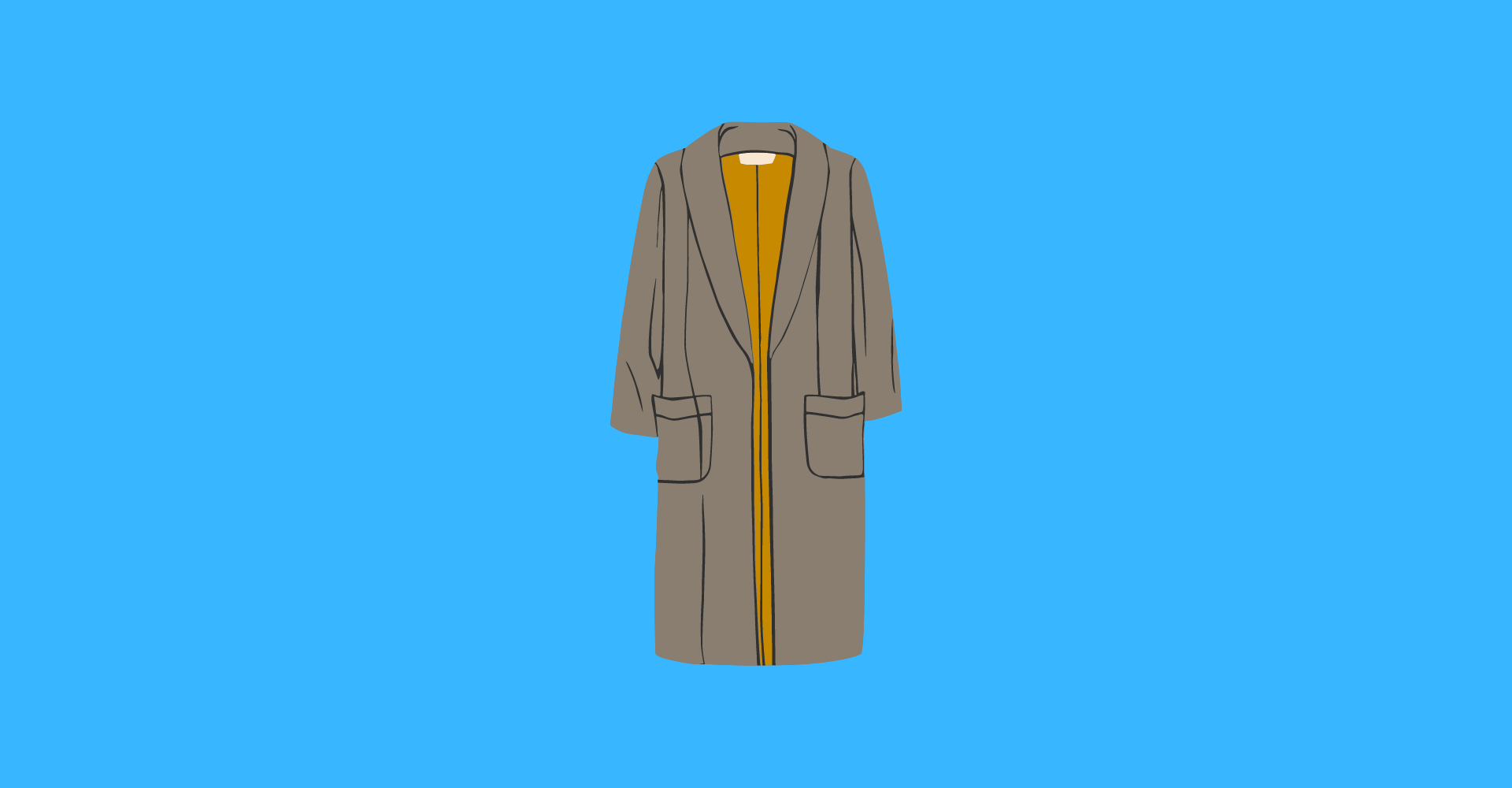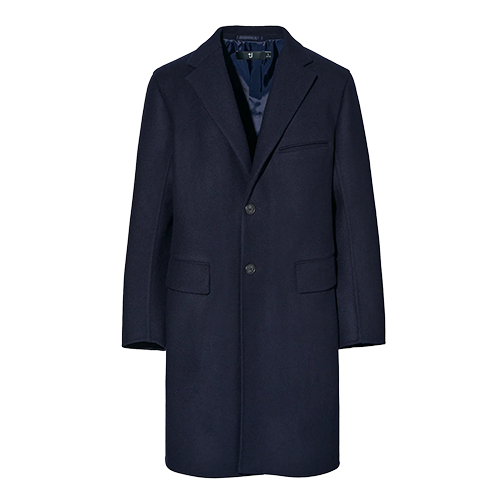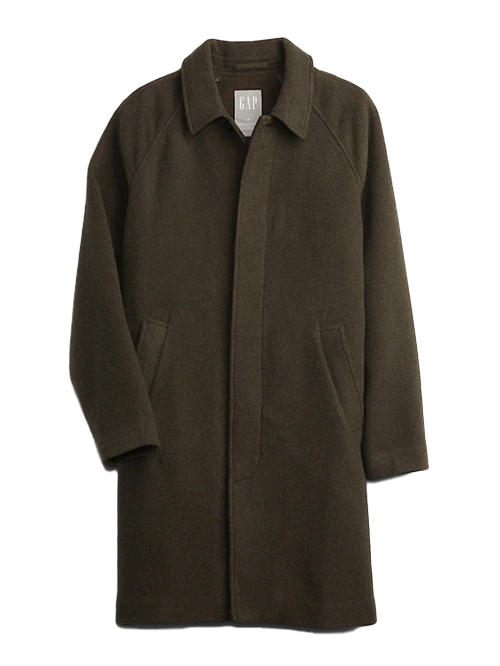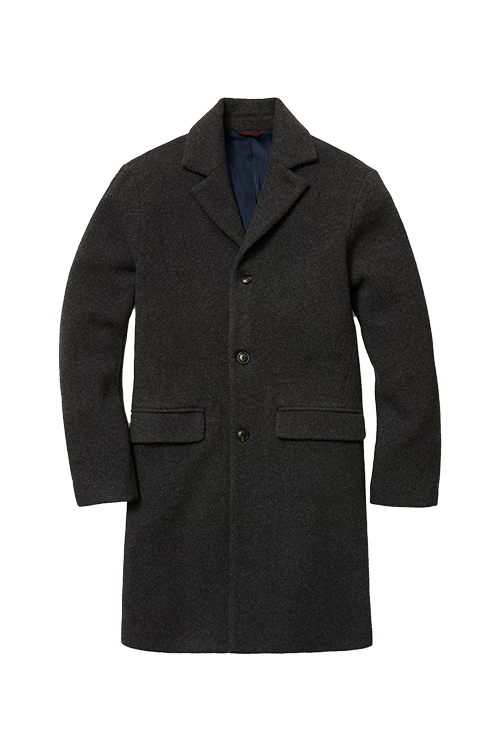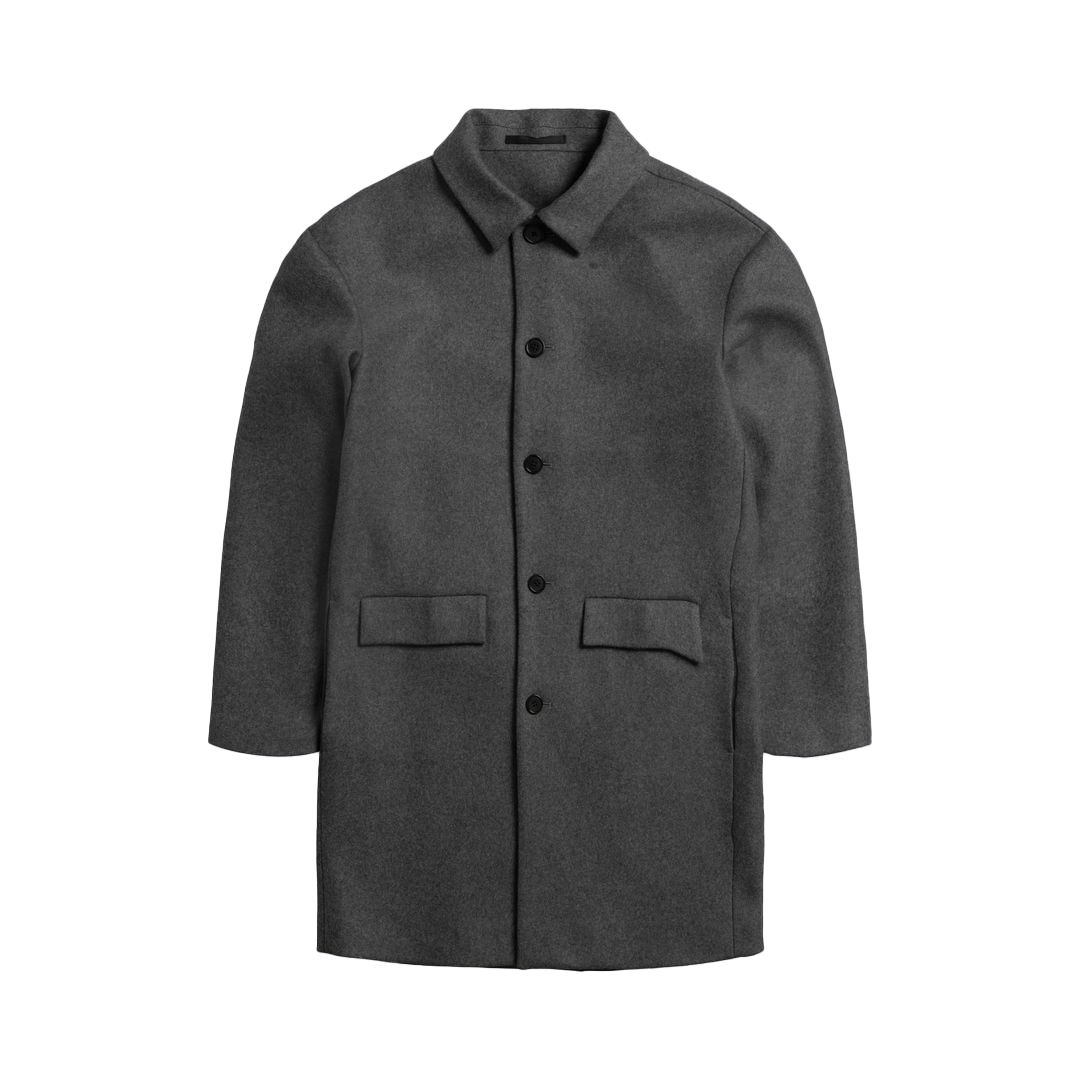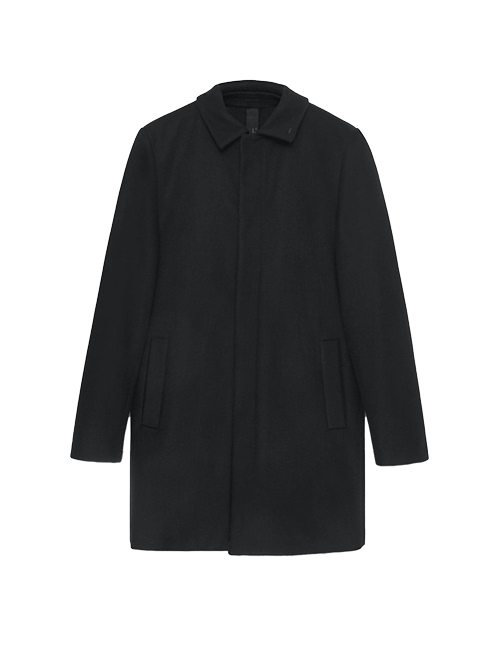Topcoats and overcoats have seen a wild resurgence in the past couple of years. Traditionally, they were worn with suiting and business casual apparel (think Peaky Blinders), but in recent years, they’ve been paired with more casual oriented styles like streetwear and Nordic minimalism.
This fashion staple originated during the 18th century. Topcoats and overcoats were worn by both civilians and soldiers alike. By the 20th century, they were worn by multiple subcultures like skinheads, prep students, and rockstars.
During the 1980s, they gained the mainstream appeal as a staple of power. It was a spotlight fashion choice for Italian designers, such as Giorgio Armani.
What is the Difference between a top coat and overcoat?
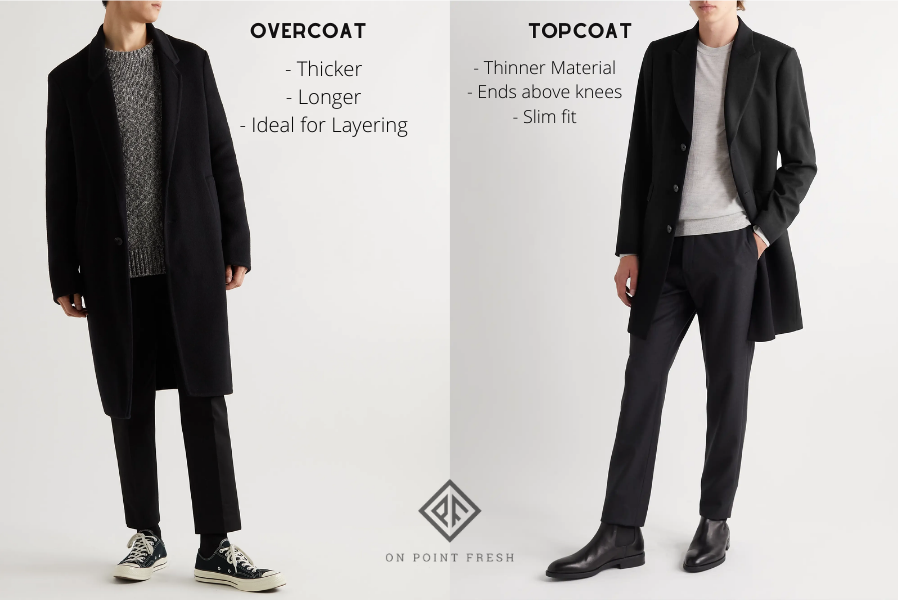
The difference between a topcoat and an overcoat is the length and weight. While an overcoat is made out of heavier fabric like cotton or heavy wool, a topcoat might have a lighter wool material. Topcoats are shorter than overcoats and end above the knees. Like the name suggests, an over-coat is usually worn over other heavier articles of clothing.
How an overcoat should fit
If you’re planning to wear them over a suit jacket or blazer, they need to have some room. Most traditional brands are properly sized, removing the need to size up.
Some fast fashion brands assume you’re wearing them more casually, so you can’t place a lot of layers underneath unless you size up.
If you’re wearing an overcoat over a suit, make sure the sleeves are slightly longer than the suit jacket and the length to be right above the knees, to one that’s longer if you’re living in a cold area with snow.
If you’re wearing a topcoat for sans-suiting, then you can go for coats at mid-thigh to knee level. If you have a short stature, then wearing mid-thigh coats will work the best.
Overcoat colors
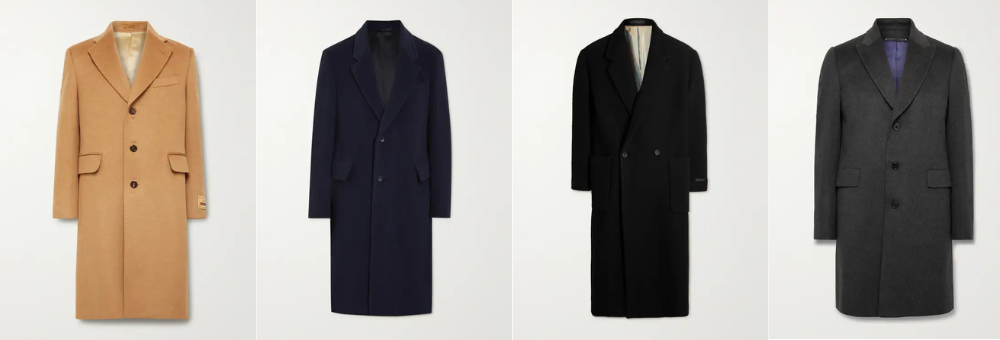
Getting the right color for your coat plays an important part in your final outfit. Generally, colors ranging from casual to formal are:
- Camel
- Non-conventional colors like burgundy, olive, etc.
- Grey
- Navy
- Black
Materials
Usually, you’ll want a coat with a high count of wool, mainly for colder weather. Sometimes having polyester or another fabric can be used to add longevity and strength to the fabric. So don’t worry about the 90% wool and 10% polyester hybrids.
Once it reaches the 70% wool content, it’s more of a cost-effective measure, and you should watch out. The caveat would be if you’re wanting a light topcoat and aren’t worried about harsh cold weather. If so, go wild.
If you’re getting a cashmere coat, then get a mix of polyester and other materials. While 100% cashmere has a luxurious look, it’s extremely expensive.
Lapels
You can wear notched lapels if you want a classic look. However, you can get peaked lapels, which was a small trend a few years ago. They are more attention-grabbing and are a nice feature.
Single-breasted topcoats are the easiest way to pair with casual clothing. Double-breasted jackets are more attention-grabbing but can overwhelm you if you’re not confident in your style.
Pockets
Most overcoats and topcoats that have ‘regular’ pockets patch with a flap, patch pockets, or pipped pockets. From the most casual to formal: patch pocket, patch with flap, regular pockets, pipped.
Lining
There are different types of lining that can be used for a blazer or suit jackets. A half-lined or fully lined jacket is warmer because you have air pockets between the lining and the outer shell. Unlined jackets will drape better and are used for cooler environments.
Shoulder padding
Similar to blazers and suit jackets again, you can wear topcoats with/without padding. Shoulder padding will give a structured look to your coat while not having one will create a more casual slouched look.
Buttons
Buttons that have a metal texture will have a military feel. Usually, buttons will either be black, plastic matte, or will match the color of the garment.
Most Stylish Overcoats
There’s no better time to invest in a new overcoat. But if you’re not sure what kind of coat is best for you, we’ve got your back. Below are some of the best overcoats for men on the market right now.
This Chesterfield coat is made of a wool blended fabric that makes it suitable for all seasons. It has a flattering cut and traditional style that will suit both work and casual occasions. The wool makes it an ideal winter coat, while the blend ensures it can be worn in warmer weather too.
Get warm, eco-friendly style with this recycled wool jacket. Made from 50% recycled wool and 30% polyester, this garment will get you through the winter in style while reducing our impact on the environment. It features long sleeves, a button-front collar, and front slant pockets.
In a world where men want to be looked at as more than just a suit, the Italian Topcoat is an elegant coat that can be worn over a suit or on its own with a sweater. Made from 70% wool, this coat has been designed to be warm and comfortable.
Perfect for the dry, cold days of winter with its oversized, slouchy silhouette and added hood. The sleeves are extra long for maximum coverage, and the pockets are functional too. The wool is made from 100% post-consumer recycled wool which is soft against your skin.
The Modular Wool Coat is a versatile outerwear system that adapts to the weather. With snap-on, interchangeable insulation and outer layers, this coat will always keep you warm and looks great all year long. Use the waterproof/windproof shell as an overcoat during those unpredictable spring showers. Swap out the wool lining for a down vest on those chilly fall days.
Get an Overcoat that Complements Your Style
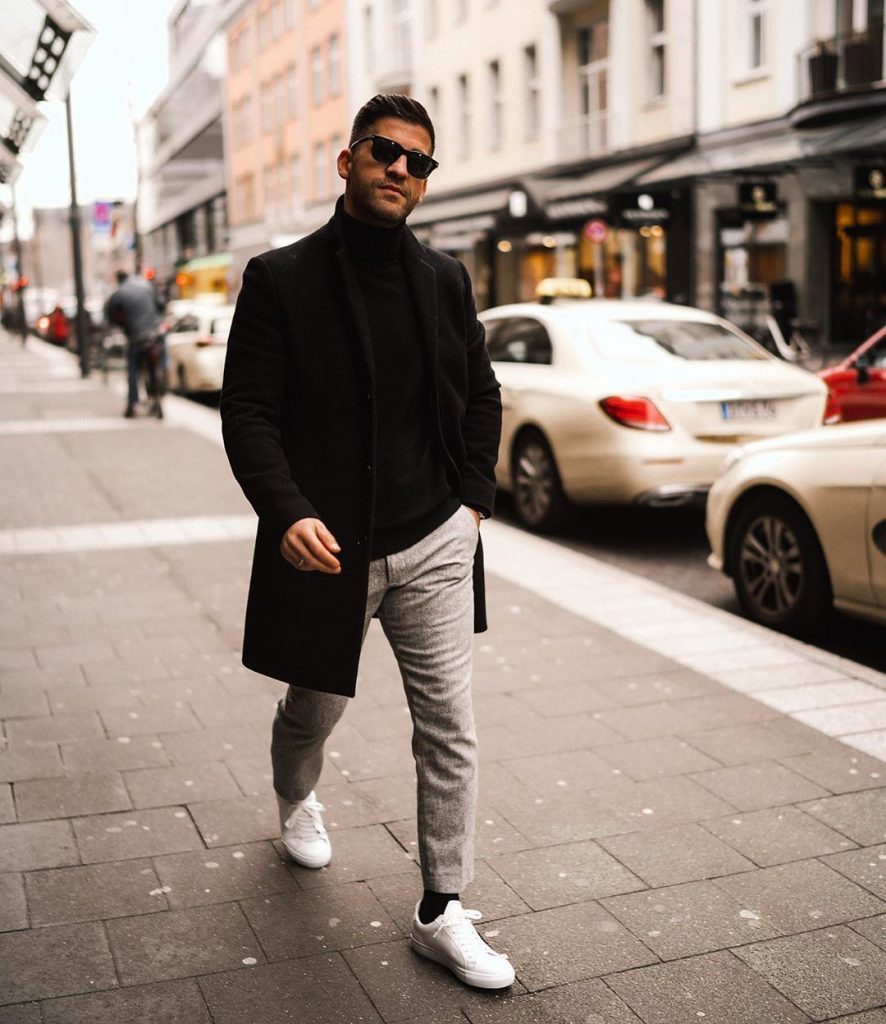
Most winter jackets stem from two different styles – what the elite men wore and what the military wore. Greatcoats, peacoats, and even the duffle coats were previously worn in the armed forces. Crombie jackets and dapper topcoats were worn by noblemen and courtiers decades before being worn by rockstars.
Many fashion labels have taken inspiration from these classics to help create more modern pieces – like outdoorsman parkas in beautiful caramel fabrics and hooded wool coaches jackets.
Your overcoat is like an iPhone – so subtly stylish and pragmatic that you almost forget it’s there when it’s on, yet miss it deeply when you have to dress without it. You get the picture – if you’re going to get an overcoat, make sure you love the damn thing.
What Will You Wear it With?
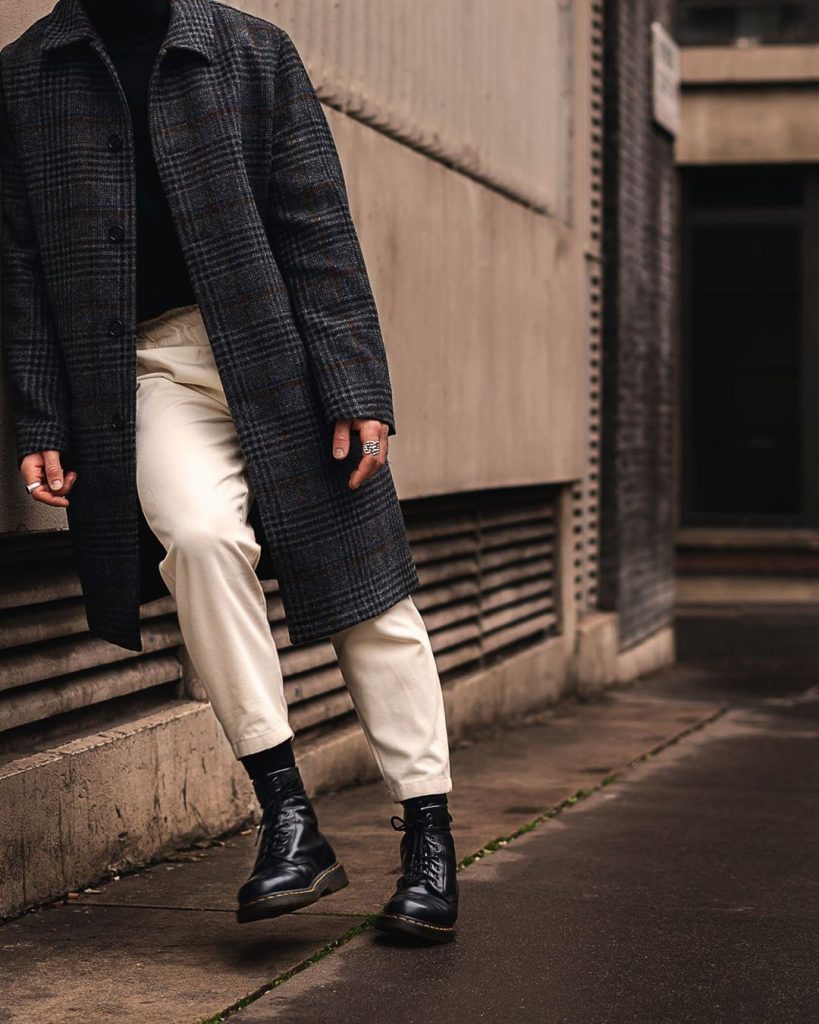
When shopping for topcoats and overcoats, remember what your entire wardrobe looks like. If your wardrobe has a lot of black, white, or navy, then make sure your coat matches that color grouping or wear something that complements it.
Ideally, the coat should have a slim fit, but leaves some room to layer sweaters, turtlenecks, lighter jackets, and hoodies underneath. While slightly oversized coats are becoming a trend, you’ll want to wear something that feels comfortable year-in, year-out. You don’t want to waste money on a one season piece for your first overcoat.
Your coat needs to sit on your shoulders while the sleeves stop at your wrist. While there are some designer labels (i.e., Lemaire) that like to exaggerate sizing proportions, a good rule of thumb is to make sure the hem of the coat ends near your knees.
